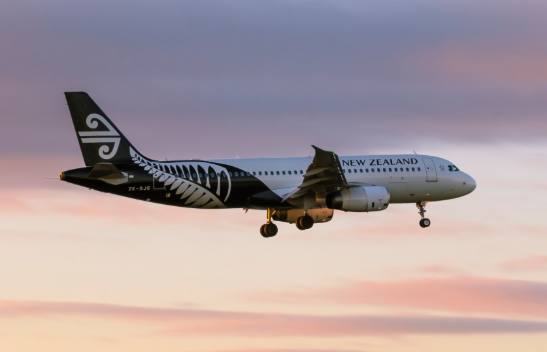As of May 15, Air New Zealand’s share price had dropped to $0.61, indicating a minor 0.81% decrease from the previous trading session. Experienced investors might not be alarmed by this slight change, but the overall trend paints a much more vivid picture. Although the airline’s stock has increased 10.91% over the last year, it has decreased 6.09% over the last month, indicating short-term volatility layered over longer-term stabilization.

A particularly intriguing outlook for Aotearoa’s national carrier is framed by this dual narrative, which contrasts short-term softness with long-term potential. The company is in a precarious but strategically promising position by combining long-haul fleet upgrades, post-COVID tourism growth, and macroeconomic pressure from labor and fuel costs. For those closely following the aviation industry, Air New Zealand’s performance perfectly captures the age-old conflict between altitude and turbulence.
| Category | Details |
|---|---|
| NZX Ticker | AIR |
| ASX Ticker | AIZ |
| Current Share Price | $0.61 NZD (as of May 15) |
| 1-Month Change | -6.09% |
| 12-Month Change | +10.91% |
| Market Capitalisation | $2.03 Billion NZD |
| Trades (Daily) | 498 |
| Volume | 1,066,247 Shares |
| Dividend Yield | 4.47% |
| P/E Ratio | 16.76 |
| EPS | $0.036 |
| Official Source | NZX: Air New Zealand , Instagram |
Flight Routes and Predictions: Handling Short-Term Drag
A predicted decline to $0.60 by the end of the quarter and a possible decline to $0.58 in a year may seem depressing in light of macroeconomic changes and sector-specific pressures. Even though they are conservative, these estimates fall short of capturing the company’s progressive approach. In a market where operating costs are on the rise, Air New Zealand is establishing itself as a leaner, more fuel-conscious competitor by utilizing fleet modernization, which includes efficient Dreamliners and next-generation Airbus aircraft.
An especially obvious hedge against volatility is provided by the airline’s revenue model, which is noticeably diversified across cargo, engineering services, and international leasing. Air New Zealand’s hybrid model adds resilience that investors might not appreciate, in contrast to low-cost carriers that are unduly reliant on seasonal travel booms. The incorporation of engineering services into its broader financial strategy has been especially creative, as it has helped to maintain revenue stability even during periods of low travel demand.
Recovery of Regional Demand and Post-COVID Tourism
Global aviation has changed in the last year, not only in terms of volume but also in terms of passenger expectations and destination dynamics. The return of international flights and the increase in demand from Asia-Pacific tourists have significantly benefited New Zealand, a nation that depends heavily on tourism, thanks to its strong international brand in adventure, wellness, and eco-tourism.
Air New Zealand can profit from mid- and long-haul flights into Australia, Southeast Asia, and the U.S. West Coast by taking advantage of these demand trends. In addition to strategically growing its investor base, the airline’s dual listing on the NZX and ASX enables more flexible equity management and capital movement. Due to regional inflation and fuel volatility, some investors are still wary, but others see this airline’s long runway for global market expansion.
Modernization of the Fleet and Operational Effectiveness
From a strategic perspective, Air New Zealand’s future is particularly compelling when it comes to fleet overhaul. The airline is embracing more sustainable fuel standards and drastically lowering emissions per passenger with continuous improvements to its Boeing and Airbus models. These programs are not only idealistic; they are also very effective cost-cutting measures with long-term benefits in a time when investor confidence is becoming more and more correlated with environmental accountability.
Institutional investing benchmarks have replaced public relations tools as the primary ESG metrics during the last ten years. For Air New Zealand, which upholds a strong sense of national identity and environmental values, this alignment may prove to be extremely successful in drawing in ESG-focused investment. Airlines actively implementing greener operational frameworks are attracting the attention of institutional investors, especially those in Australia and Europe.
Dividends, Valuation, and the Argument for Accumulation
In today’s equity market, Air New Zealand presents a profile that is both competitive and surprisingly inexpensive, with a P/E ratio of 16.76 and a gross dividend yield of 4.47%. In fact, the current decline might offer a strong opportunity for accumulation for investors who are middle-risk and looking for steady yields with room to grow. Although the company’s earnings per share, which are currently at $0.036, show a modest recovery, the stock feels incredibly resilient to short-term drag when combined with strong brand equity and nationwide support.
Air New Zealand remains one of the most reputable and culturally significant regional carriers. This trust turns into an underappreciated asset in and of itself when paired with a strategy that prioritizes modernization, diversification, and the customer experience. For portfolio managers, the story is just as valuable as the numbers.
